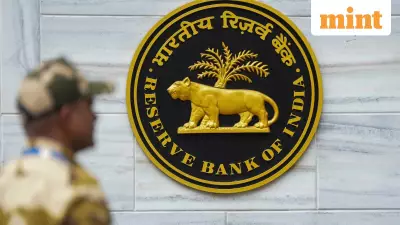
Indian investors looking to put their money in mutual funds should carefully examine historical performance data before making any decisions. Analyzing returns over multiple years helps establish realistic expectations about potential future outcomes, according to financial experts.
Why Long-Term Performance Matters
When evaluating mutual fund schemes, financial advisors typically recommend assessing performance across several years rather than focusing on short-term results. One or two years of exceptional returns might represent a temporary anomaly, while consistent performance over an extended period often indicates greater reliability in fund management.
This approach allows investors to understand the fund's growth pattern and how it has navigated different market conditions. Comparing a scheme's returns against similar funds in the same category provides additional context for making informed investment choices.
Understanding Flexi-Cap Mutual Funds
Flexi-cap mutual funds represent a dynamic category of investment schemes that maintain significant flexibility in their asset allocation strategy. These funds are required to invest at least 65% of their assets in equity and equity-related instruments, while fund managers have complete freedom to distribute investments across companies of different market capitalizations.
This flexibility allows fund managers to adjust their portfolio allocation between large-cap, mid-cap, and small-cap stocks based on market conditions and investment opportunities. According to Association of Mutual Funds in India (AMFI) data as of October 31, 2025, there are 43 flexi-cap mutual funds operating in India with total assets under management reaching an impressive ₹5.33 lakh crore.
Five-Year Performance Highlights
An analysis of large-cap fund performance over the past five years reveals several standout performers. The data, sourced from AMFI and current as of November 11, 2025, shows six large-cap schemes that have delivered annualized returns exceeding 17% during this period.
Nippon India Large Cap Fund led the group with an impressive 22.65% annualized return over five years. ICICI Prudential Large Cap Fund followed closely with 19.79%, while HDFC Large Cap Fund delivered 19.24% returns during the same timeframe.
Other notable performers included Invesco India Large Cap Fund (17.82%), Kotak Large Cap Fund (17.07%), and Tata Large Cap Fund (17.57%). These consistent returns demonstrate the potential of well-managed large-cap funds to generate substantial wealth over medium to long-term investment horizons.
Important Investment Considerations
While historical performance data provides valuable insights, financial experts emphasize that past returns never guarantee future results. A scheme that has performed exceptionally well in previous years might not maintain the same performance level in coming periods due to changing market dynamics, economic conditions, and other factors.
Investors should consider multiple aspects beyond historical returns when selecting mutual fund schemes. These include the fund manager's track record, expense ratios, investment philosophy, and how well the scheme aligns with individual financial goals and risk tolerance.
Always consult with a SEBI-registered investment advisor before making any investment decisions. Professional guidance can help investors navigate the complexities of mutual fund investments and create portfolios tailored to their specific financial objectives and risk profiles.
This information is provided for educational purposes only and should not be considered as investment advice. Mutual fund investments are subject to market risks, and investors should read all scheme-related documents carefully before investing.





